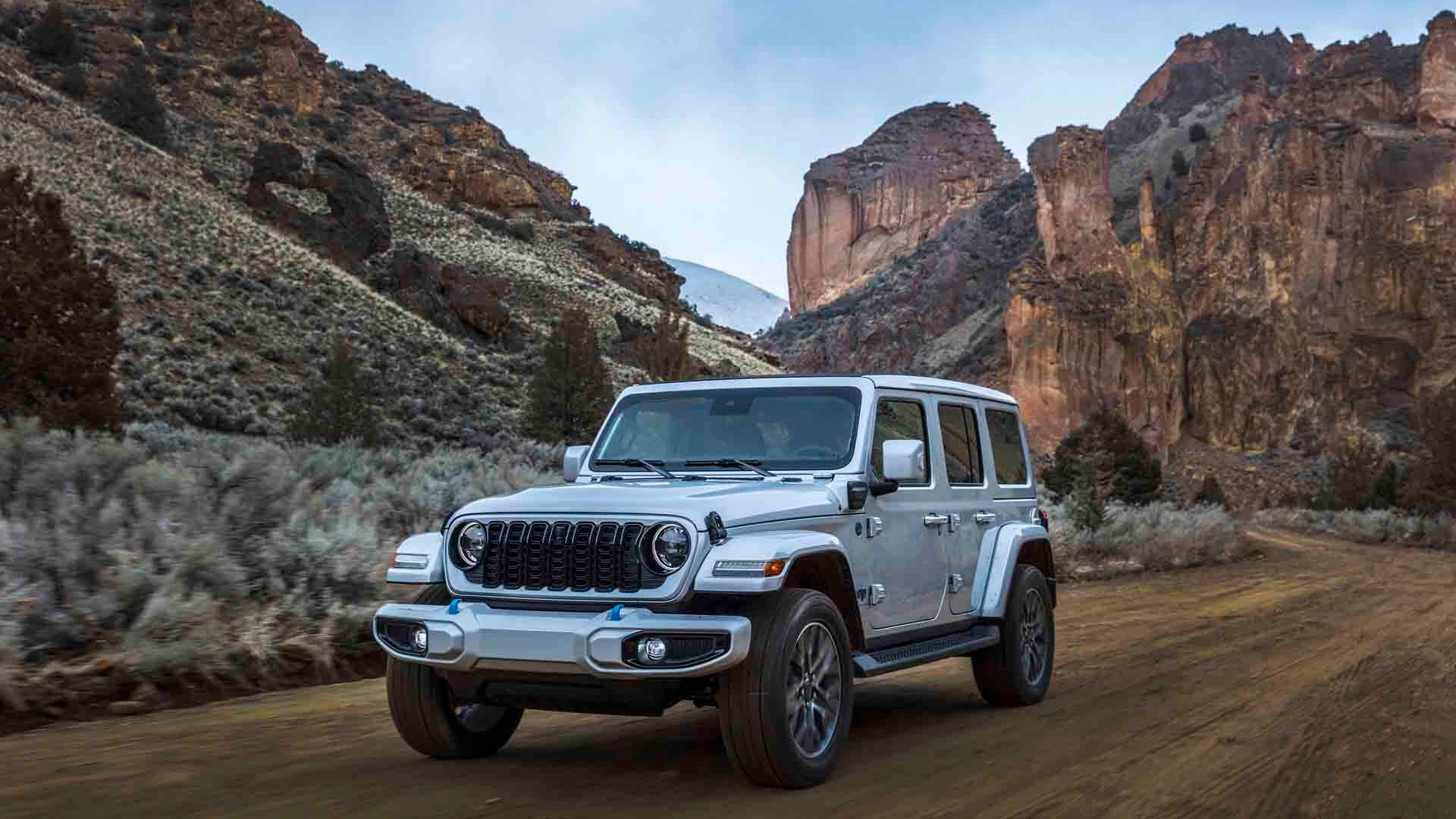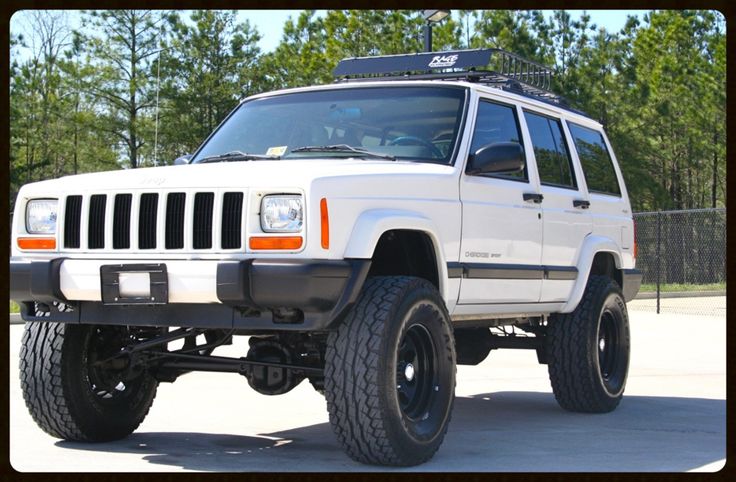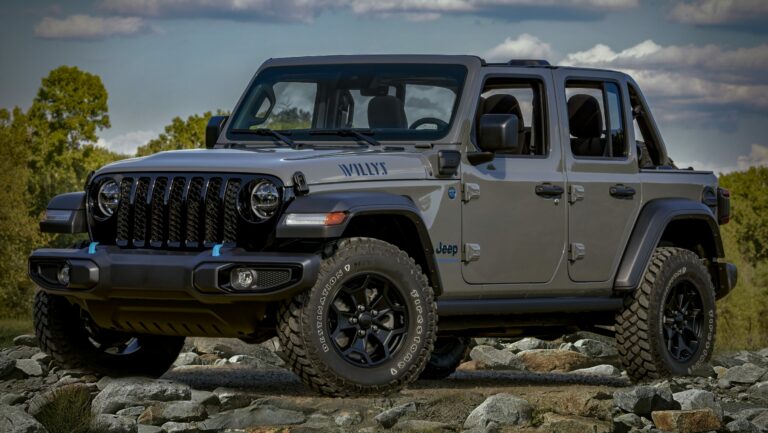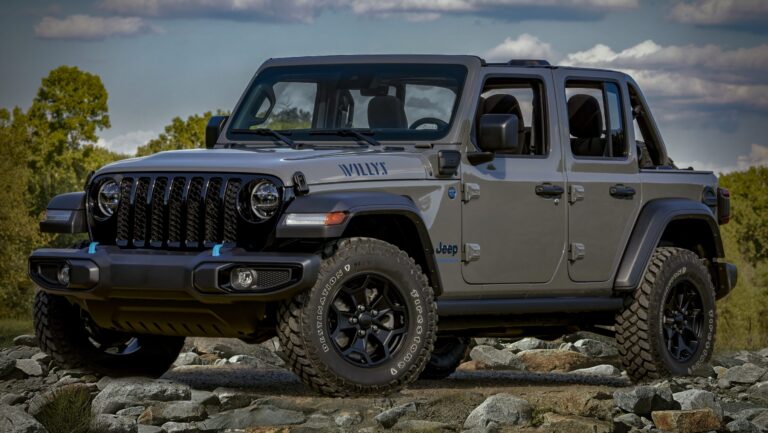Jeep Wrangler Vs Cherokee: Charting Your Course Through Two Iconic Paths
Jeep Wrangler Vs Cherokee: Charting Your Course Through Two Iconic Paths jeeps.truckstrend.com
The Jeep brand conjures images of freedom, adventure, and an indomitable spirit. At its heart lie two of its most recognizable and successful models: the rugged Jeep Wrangler and the versatile Jeep Cherokee. While both bear the revered seven-slot grille, they represent fundamentally different philosophies, engineered to cater to distinct drivers and lifestyles. Understanding the nuances between the Jeep Wrangler and the Jeep Cherokee is crucial for anyone looking to invest in a vehicle that truly matches their needs, whether it’s conquering unyielding trails or navigating the daily urban jungle with confidence. This comprehensive guide will dissect the characteristics of each, helping you chart the course to your ideal Jeep.
Jeep Wrangler Vs Cherokee: Charting Your Course Through Two Iconic Paths
Heritage and Philosophy: Built for Different Paths
The story of the Jeep Wrangler is a direct lineage from the military Willys MB, a vehicle forged in the crucible of war and defined by its unparalleled off-road capability. Its philosophy remains rooted in raw, uncompromised adventure, offering open-air freedom and a design built for extreme terrain. It’s not just a vehicle; it’s a statement of rugged independence and a canvas for customization.
In contrast, the Jeep Cherokee, while also having a rich history that includes pioneering the "sport utility vehicle" concept, has evolved significantly. The modern Cherokee, introduced in its current form in 2014, is primarily a compact to mid-size crossover SUV. Its philosophy balances Jeep’s legendary 4×4 capability with the demands of daily driving, offering a more refined ride, practical interior, and contemporary features suited for families and commuters who occasionally venture off the beaten path.
Design and Aesthetics: Form Follows Function
The visual distinction between the Wrangler and Cherokee is immediate and striking.
Jeep Wrangler: The Wrangler’s design is iconic: a boxy, upright silhouette, exposed door hinges, round headlights, and the unmistakable seven-slot grille. Every element serves a purpose for off-roading, from its short overhangs for better approach/departure angles to its removable doors and roof panels that offer an unmatched open-air driving experience. It’s a design that prioritizes durability and functionality over aerodynamic sleekness, proudly displaying its rugged DNA. Its modular nature also means it’s infinitely customizable, with a vast aftermarket ecosystem.
Jeep Cherokee: The Cherokee presents a far more conventional and contemporary SUV aesthetic. Its lines are smoother, more sculpted, and aerodynamic, designed to appeal to a broader consumer base looking for a modern crossover. While it retains the signature seven-slot grille, its slim, angular headlights and more integrated body panels give it a sophisticated, urban-friendly look. The Cherokee prioritizes passenger comfort, quietness, and efficiency, which are reflected in its streamlined design and fixed body structure.
![]()
Performance and Drivetrain: Powering Your Adventure
The engineering under the hood and chassis further emphasizes the distinct purposes of these two Jeeps.
Jeep Wrangler: The Wrangler is built on a body-on-frame chassis with robust solid axles both front and rear. This construction is ideal for articulation over uneven terrain and handling extreme loads. It typically offers a choice of powerful engines, often geared for low-end torque crucial for crawling. Its 4×4 systems are legendary: Command-Trac (part-time 4WD) and Rock-Trac (a more advanced system with lower gearing, found in Rubicon models) provide unparalleled traction and control in challenging conditions. High ground clearance, impressive water-fording capabilities, and robust underbody protection are standard.
Jeep Cherokee: The Cherokee utilizes a unibody construction with independent suspension on all four wheels, which contributes to a smoother, more car-like ride on paved roads. Its engine options typically prioritize fuel efficiency and refined power delivery for daily driving. While primarily front-wheel drive (FWD) in its base configurations, it offers several sophisticated 4×4 systems: Active Drive I (fully automatic), Active Drive II (adds a low range for more serious off-roading), and Active Drive Lock (exclusive to the Trailhawk, adding a locking rear differential for maximum traction). While capable, even the Trailhawk, its most off-road-oriented trim, is not designed for the same level of extreme rock crawling as a Wrangler.

Interior and Comfort: Inside the Cabin
The cabin experience varies significantly, reflecting each vehicle’s primary mission.
Jeep Wrangler: The Wrangler’s interior is functional and durable, designed to withstand the elements and easy to clean (some models even have washable interiors with drain plugs). While modern Wranglers have significantly upgraded their tech and material quality, the emphasis remains on robustness and utility. Passenger space is adequate, but cargo room, especially in the 2-door model, is limited with the rear seats in use. Expect more road noise and a less refined ride due to its off-road-optimized suspension and aerodynamics.
Jeep Cherokee: The Cherokee’s interior is more akin to a conventional SUV, offering a higher degree of refinement, comfort, and standard technology. Materials are generally softer to the touch, seating is more supportive for long drives, and sound insulation is superior. It boasts more intuitive infotainment systems, ample storage compartments, and practical cargo space for everyday needs. The ride is smoother and quieter, making it a more pleasant daily commuter and family hauler.
On-Road Dynamics vs. Off-Road Prowess: Where They Shine
This is perhaps the most critical distinction.
Jeep Wrangler: The Wrangler is an undisputed king off-road. Its solid axles, short wheelbase (especially 2-door), high ground clearance, and advanced 4×4 systems allow it to tackle obstacles that would stop most other vehicles dead in their tracks. However, this off-road prowess comes with compromises on pavement. Its ride can be bouncy, steering less precise, and wind noise more prominent at highway speeds. It demands a driver who understands and accepts these trade-offs for its exceptional trail capabilities.
Jeep Cherokee: The Cherokee excels in on-road comfort and handling. Its independent suspension provides a smooth, composed ride, and its lighter steering makes it nimble in city traffic and easy to park. It’s a comfortable vehicle for long highway journeys. While it can handle light to moderate off-roading with its available 4×4 systems (especially the Trailhawk, which features increased ground clearance, skid plates, and off-road tires), it is not built for the extreme rock crawling or deep mudding that the Wrangler can conquer. It’s perfect for snowy roads, muddy tracks to a campsite, or unpaved trails.
Safety and Technology: Modern Conveniences
Both vehicles offer modern safety and technology features, though their integration and emphasis differ.
Both the Wrangler and Cherokee are available with a suite of advanced driver-assistance systems (ADAS) like adaptive cruise control, blind-spot monitoring, rear cross-path detection, and forward collision warning. The Cherokee, being more geared towards a mass-market SUV audience, often includes more of these features as standard or in lower trims. The Wrangler has significantly improved its tech offerings in recent generations, with large Uconnect touchscreens, Apple CarPlay, and Android Auto, but its focus remains on core off-road functionality.
Cost of Ownership and Resale Value: Long-Term Considerations
Jeep Wrangler: Wranglers are renowned for their exceptional resale value, often retaining a significant portion of their original purchase price even after several years. This is due to their iconic status, enduring appeal, and the constant demand from the aftermarket customization community. Maintenance costs can be slightly higher due to specialized parts and the potential for wear and tear from off-road use, but their robust construction often means they hold up well.
Jeep Cherokee: The Cherokee also holds its value well within the competitive compact SUV segment, though typically not to the same degree as the Wrangler. Its parts and maintenance costs are generally comparable to other vehicles in its class, making it a relatively affordable SUV to own over time. Fuel economy is generally better than the Wrangler, contributing to lower running costs.
Practical Advice and Actionable Insights
Choosing between the Wrangler and Cherokee boils down to a fundamental question: What is your primary use case and what are your priorities?
-
Choose the Jeep Wrangler if:
- You’re an avid off-roader or aspire to be one. This is its natural habitat.
- You crave open-air driving and the unique experience of removing doors/roof.
- You enjoy customizing your vehicle and being part of a strong enthusiast community.
- You prioritize ruggedness and capability over refined on-road manners.
- Resale value is a significant concern.
-
Choose the Jeep Cherokee if:
- You need a comfortable, practical, and fuel-efficient daily driver.
- You primarily drive on paved roads but want confidence in adverse weather or on light trails.
- You need more cargo space and passenger comfort for family use.
- You prefer a modern SUV aesthetic and standard technology features.
- You appreciate a smoother, quieter ride for commutes and long trips.
Key Questions to Ask Yourself:
- What percentage of your driving will be off-road vs. on-road?
- How extreme are the off-road conditions you anticipate encountering?
- How important is a refined and comfortable daily commute?
- Do you need ample cargo space and easy passenger access frequently?
- What is your budget for initial purchase and long-term ownership (fuel, insurance, maintenance)?
Jeep Wrangler Vs Cherokee: Price Table (New Models – Approximate MSRP Starting From)
Note: Prices are approximate MSRP for new base models and common trims in the US market. Actual prices vary significantly based on trim level, options, dealer, region, incentives, and market conditions. Used prices will vary widely based on year, mileage, condition, and trim.
| Feature/Model | Jeep Wrangler | Jeep Cherokee |
|---|---|---|
| Vehicle Type | Body-on-frame, dedicated off-road SUV | Unibody, compact to mid-size crossover SUV |
| Base Trim | Sport 2-Door | Latitude (FWD) |
| Starting MSRP | $32,000 – $35,000 USD | $30,000 – $35,000 USD |
| Common Trims | Sport, Sport S, Willys, Sahara, Rubicon, Rubicon 392, 4xe | Latitude, Latitude Plus, Altitude, Limited, Trailhawk |
| High-End Trim (Example) | Rubicon 4-Door | Trailhawk 4×4 |
| High-End MSRP (Example) | $45,000 – $50,000+ USD | $38,000 – $42,000+ USD |
| Engine Options | 2.0L Turbo I4, 3.6L Pentastar V6, 6.4L V8 (392), 2.0L PHEV (4xe), 3.0L EcoDiesel V6 (discontinued) | 2.4L Tigershark I4, 3.2L Pentastar V6, 2.0L Turbo I4 (discontinued) |
| Drivetrain | Part-time 4WD, Full-time 4WD (optional), Solid Axles F/R | FWD, Active Drive I/II/Lock 4×4, Independent Suspension F/R |
| Fuel Economy (MPG Est.) | 18-22 City / 20-25 Highway (Varies greatly by engine/trim) | 20-23 City / 26-31 Highway (Varies by engine/FWD/4×4) |
| Open-Air Cap. | Removable Roof & Doors | Standard fixed roof (sunroof optional) |
| Primary Use | Extreme Off-roading, Adventure, Customization | Daily Driving, Commuting, Light Off-roading, Family |
Frequently Asked Questions (FAQ)
Q1: Which Jeep is better for daily driving and commuting?
A1: The Jeep Cherokee is significantly better for daily driving. Its unibody construction, independent suspension, and more aerodynamic design provide a smoother, quieter, and more comfortable ride compared to the Wrangler.
Q2: Which Jeep is better for serious off-roading?
A2: The Jeep Wrangler is the undisputed champion for serious off-roading. Its body-on-frame design, solid axles, high ground clearance, and advanced 4×4 systems are engineered for extreme terrain, rock crawling, and deep mud.
Q3: Is the Jeep Cherokee a "real" Jeep?
A3: Yes, the Jeep Cherokee is absolutely a "real" Jeep. While it caters to a broader audience, it still embodies Jeep’s heritage of capability. Especially in its Trailhawk trim, it offers impressive off-road prowess for a crossover SUV, capable of handling most trails and challenging conditions that typical drivers would encounter.
Q4: Which vehicle offers better fuel economy?
A4: The Jeep Cherokee generally offers better fuel economy than the Wrangler, thanks to its more aerodynamic design, lighter unibody construction, and engines optimized for efficiency. The Wrangler 4xe (plug-in hybrid) offers a competitive electric range and fuel economy, but its initial cost is higher.
Q5: Which Jeep holds its value better?
A5: The Jeep Wrangler is famous for its exceptional resale value, often holding its value better than almost any other vehicle on the market. The Cherokee has good resale value for its class but doesn’t quite match the Wrangler’s legendary retention.
Q6: Can I take a Jeep Cherokee off-road?
A6: Yes, you can take a Jeep Cherokee off-road, particularly the Trailhawk trim. It comes with enhanced 4×4 systems (Active Drive Lock), increased ground clearance, skid plates, and off-road tires, making it very capable on moderate trails, snow, and light mud. However, it’s not designed for the same level of extreme rock crawling or articulation as a Wrangler.
Q7: What’s the main difference in ride comfort between the two?
A7: The Cherokee offers a significantly more comfortable and refined ride. Its independent suspension absorbs bumps better, and its cabin is quieter. The Wrangler’s ride is firmer and can be bouncy, with more road and wind noise, due to its off-road-tuned suspension and less aerodynamic shape.
Concluding Summary
The Jeep Wrangler and Jeep Cherokee, while sharing a revered badge, are fundamentally different machines built for different purposes. The Wrangler stands as an uncompromised icon of off-road prowess, open-air freedom, and limitless customization, demanding a driver who embraces adventure and is willing to accept its on-road quirks. The Cherokee, on the other hand, is a versatile, practical, and comfortable SUV that skillfully blends Jeep’s legendary 4×4 capability with the everyday demands of modern life, offering a balanced package for families and commuters.
Ultimately, the choice between the Jeep Wrangler and the Jeep Cherokee is a reflection of your lifestyle, priorities, and definition of adventure. Whether you seek to conquer the wildest trails or navigate the urban landscape with confidence and occasional capability, there’s a Jeep designed to perfectly match your journey. Choose wisely, and embrace the spirit of adventure that only a Jeep can provide.




